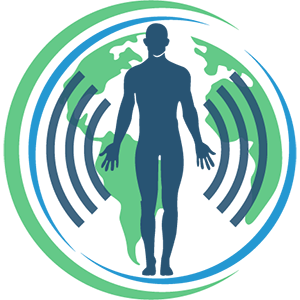If we The Frequency Range within Electro Magnetic Spectrum
The electro magnetic spectrum covers a wide range of radiation which carries frequencies or wavelengths, measured in hertz, (cycles per second). All these wavelengths describe energy – from its densest particles to its lightest. At the lower end of the spectrum are the shorter wavelengths of gamma rays, and at the highest end of the spectrum are the longer wavelengths of radio waves.
We measure frequencies in units hertz (Hz), referring to a number of cycles per second.
Popular Terms Used in Measuring Frequencies in Electro Magnetic Spectrum
- One thousand hertz is referred to as a kilohertz (KHz)
- 1 million hertz as a megahertz (MHz)
- 1 billion hertz as a gigahertz (GHz)
The frequency range in the electro magnetic spectrum we currently know of has many uses. Here I present some of them in ascending order from the shorter wavelengths to the longest:
- Radioactive fallout emits Gamma rays – and it is used in cancer treatments.
- CT scans use X rays – and applications include cancer treatments and airport scanners.
- The sun emits Ultra-violet rays – as do very hot objects such as UV lamps. Applications include sunbeds, invisible security markings and sterilizing processes.
- The sun also emits Optical light – as do other hot objects such as light bulbs and lazers. Applications include lazer scanners, optical fibers and human eyesight.
- Oscillating molecules in hot objects emits infrared rays. Applications include thermal imaging, toasters, grills and remote controls.
- Microwaves are produced in “electron tube oscillators”. Applications include microwave ovens, mobile phones, satellites, and radar.
- Radio waves are produced by oscillating electrons in aerials, and other applications includes TV and radio communications.
Now numerically the length of waves is inversely related to the intensity of frequencies.
If we look at one end of the spectrum, the radio waves emit long wavelengths and so carry very low frequencies (low energy). (I remember it by L and L = long waves low frequencies.) A spread out wavelength creates a very low frequency, to the point of being almost out of range of perception at times. This happens at times when searching for radio stations on a radio!
At the other end of the spectrum, the gamma rays emit short wavelengths and yield very high frequencies (high energy). Imagine a scrunched up, shortened wavelength creating a very intense, high frequency of energy.
Sound is Audible Light
Sound frequencies travel in longitudinal waves whereas most frequencies travel in transverse waves. Therefore, since sound waves behave completely differently to the other frequencies in the electro magnetic spectrum, they cannot be part of the official electro-magnetic spectrum! See my other post for more details.
Sound technically is a form of light, or electricity, of varying frequencies. It is a form of audible light.
Sound range Audible to Humans
Humans only hear sound frequencies whose measurements start below and stretch into the lower end of the radio EM spectrum. This ranges from 3 Kilohertz to several billion hertz. Humans can detect sounds in a frequency range from about 20 Hz to 20 kHz. Although infants can actually hear frequencies slightly higher than 20 kHz, they lose their sensitivity to high-frequencies as they mature. The upper limit in average adults is often closer to 15–17 kHz.)
Ultrasound
As you probably know, Medicine often uses Ultrasound Imaging. Ultrasound is actually not different from “normal” (audible) sound in its physical properties. Nevertheless, humans cannot hear it. …That’s because ultrasound technology relies on sound waves with frequencies higher than the upper audible limit of human hearing.
